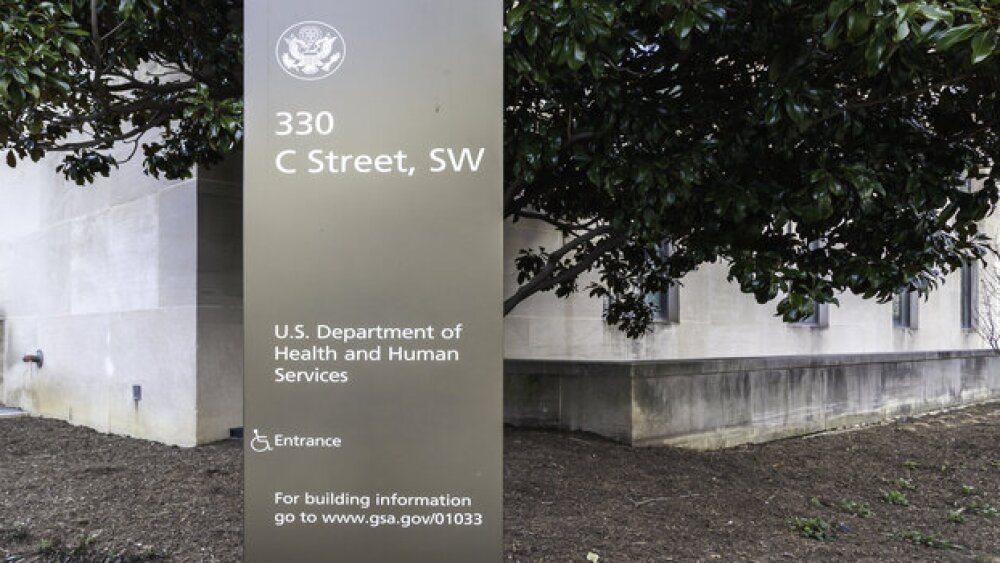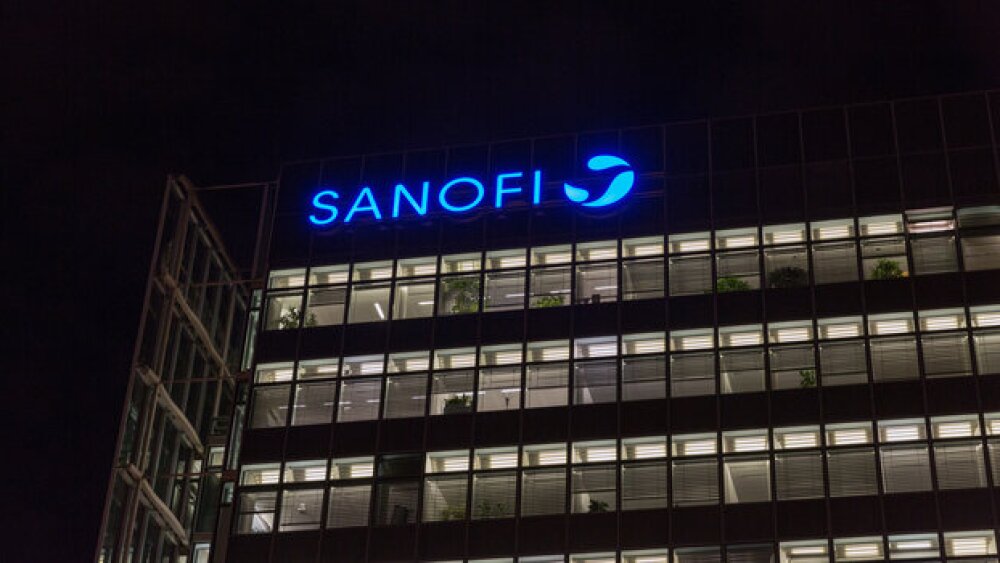The Centers for Medicare and Medicaid Services on Thursday sent its opening price proposals to drugmakers, which now have 30 days to either approve the offers or submit counteroffers.
Pictured: Sign at the Department of Health and Human Services’ office in Washington, DC/iStock, JHVEPhoto
The Department of Health and Human Services announced Thursday that it sent initial proposals to pharma companies, kicking off a months-long process to settle on a maximum fair price for the 10 drugs selected for negotiations under the Inflation Reduction Act.
The Centers for Medicare and Medicaid Services is conducting these negotiations and participating drugmakers have 30 days to either signify that they agree with the proposed pricing or submit a counteroffer.
At a JPM Week event last month, life sciences lobbying group Incubate predicted that all 10 companies would challenge CMS’s initial offer, particularly as the Biden administration is expected to make “draconian” price cuts amid the political pressure of the presidential election year.
Analysts agreed this week, telling Reuters that they expect that CMS would propose steep discounts in their initial offer, ranging from a statutory price cut minimum of 25% and reaching as high as 60%.
Negotiations will take place through the spring and summer and are scheduled to end on Aug. 1, according to a CMS fact sheet. The agency has until Sept. 1 to publish the final negotiated maximum fair prices for the 10 selected drugs, which will then take effect in 2026.
“Allowing Medicare to negotiate drug prices is just one tool we’re using to lower prices thanks to the President’s lower cost prescription drug law,” HHS Secretary Xavier Becerra said in a statement. “From capping insulin at $35 per month, to making drug companies pay a rebate for raising their prices faster than inflation, to capping out of pocket costs in Part D, we are delivering on that day-one promise.”
However, the Pharmaceutical Research and Manufacturers of America (PhRMA) on Thursday said in a statement CMS’s initial price-setting “offer” to companies was an effort to “win political points on the campaign trail.” PhRMA also criticized the negotiations process for its lack of transparency and “operating behind closed doors to set medicine prices without disclosing for months how they arrived at the price or how much patient and provider input was used.”
The Inflation Reduction Act (IRA) was signed into law in August 2022, as part of the Biden administration’s effort to generate some $25 billion in drug cost savings annually by 2031. To help achieve this goal, the IRA allows CMS to negotiate prices for some of the most widely prescribed medicines.
The first 10 drugs that would be impacted by these negotiations were named in August 2023 and include BMS’s Eliquis (apixaban), Novartis’ Entresto (sacubitril/valsartan), Amgen’s Enbrel (etanercept), Lilly’s Jardiance (empagliflozin), AstraZeneca’s Farxiga (dapagliflozin), Merck’s Januvia (sitagliptin), Novo Nordisk’s insulin products Fiasp and Novolog and J&J’s Xarelto (rivaroxaban), Imbruvica (ibrutinib) and Stelara (ustekinumab).
HHS on Thursday also released data from several reports showing the disparity in drug prices between the U.S. and other countries in the Organization for Economic Cooperation and Development (OECD).
The findings show that in 2022 prices across all drugs in the U.S. were nearly three times as high as prices in 33 OECD countries, with American consumers paying $2.78 per dollar paid in those other countries for medicines. The gap is even larger for insulin, which was nearly 10 times more expensive in the U.S. than in the 33 countries.
Tristan Manalac is an independent science writer based in Metro Manila, Philippines. Reach out to him on LinkedIn or email him at tristan@tristanmanalac.com or tristan.manalac@biospace.com.






